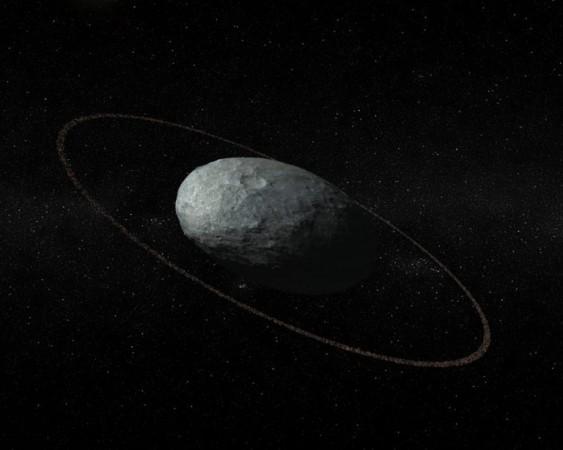
Astronomers have for the first time spotted a dwarf planet named Haumea earlier this year with a ring around it.
ALSO READ: China's FAST radio telescope detects two pulsars during trial run
The planet was observed when it passed between a distant star dubbed URAT1 533-182543 and Earth on January 21.
Here are the top things to know about this ringed dwarf planet Haumea:
1. Discovered in 2004 by a team led by Mike Brown of Caltech at the Palomar Observatory in the US, the planet is egg-shaped and is located beyond Neptune's orbit. It is referred to as "small Saturn."
2. This planet turns out to be one of the four dwarf planets existing in the Kuiper belt prevailing beyond Neptune's orbit in our solar system. The other three dwarf planets in the belt — comprising of ice and rocks — are Pluto, Eris and Makemake.
3. This planet is a trans-Neptunian object, which are usually distant, less luminous and difficult to study due to their small size. Hence, these celestial bodies are studied using an effective complex method at the time of stellar occultation when the object passes by the front of a star.
ALSO READ: NASA findings on Mars' seafloor deposits offer clues to origin of life on Earth
4. The astronomers are able to analyse the physical characteristics of an object like density, shape and size of the object when it passes by in front of a star.
"We predicted that Haumea would pass in front of a star on the 21st of January 2017, and 12 telescopes from 10 different European observatories converged on the phenomenon," said José Luis Ortiz, researcher at the Institute of Astrophysics of Andalusia (IAA-CSIC) and in charge of the study.
"This deployment of technical means allowed us to reconstruct with a very high precision the shape and size of dwarf planet Haumea, and discover to our surprise that it is considerably bigger and less reflecting than was previously believed. It is also much less dense than previously thought, which answered questions that had been pending about the object."
5. Haumea possesses an elliptical orbit around the Sun and takes 284 years to complete it. This dwarf planet requires only 3.9 hours to complete one rotation around its axis, which is considered to be quite lower than any other celestial body measuring above hundred km in the solar system. The swift rotational pace of this dwarf planet flattens it, providing it an ellipsoid shape.
6. According to the latest revelations, Haumea's largest axis is around 2,320 km, which is similar to Pluto, but this dwarf planet lacks the global atmosphere that Pluto has.
"One of the most interesting and unexpected findings was the discovery of a ring around Haumea. Until a few years ago we only knew of the existence of rings around the giant planets; then, recently, our team discovered that two small bodies situated between Jupiter and Neptune, belonging to a group called centaurs, have dense rings around them, which came as a big surprise. Now we have discovered that bodies even farther away than the centaurs, bigger and with very different general characteristics, can also have rings," said Pablo Santos-Sanz, another member of the IAA-CSIC team.
7. As per data accumulated from the stellar occultation, the ring of Haumea is present on its equatorial plane, similar to Hi´iaka — its biggest satellite. A 3:1 resonance is displayed by the dwarf planet with respect to the rotation, which means that the Planet rotates at a pace which is three times faster on its axis than that of the frozen particles present in the ring around it.
"There are different possible explanations for the formation of the ring; it may have originated in a collision with another object, or in the dispersal of surface material due to the planet's high rotational speed," said Ortiz.

















